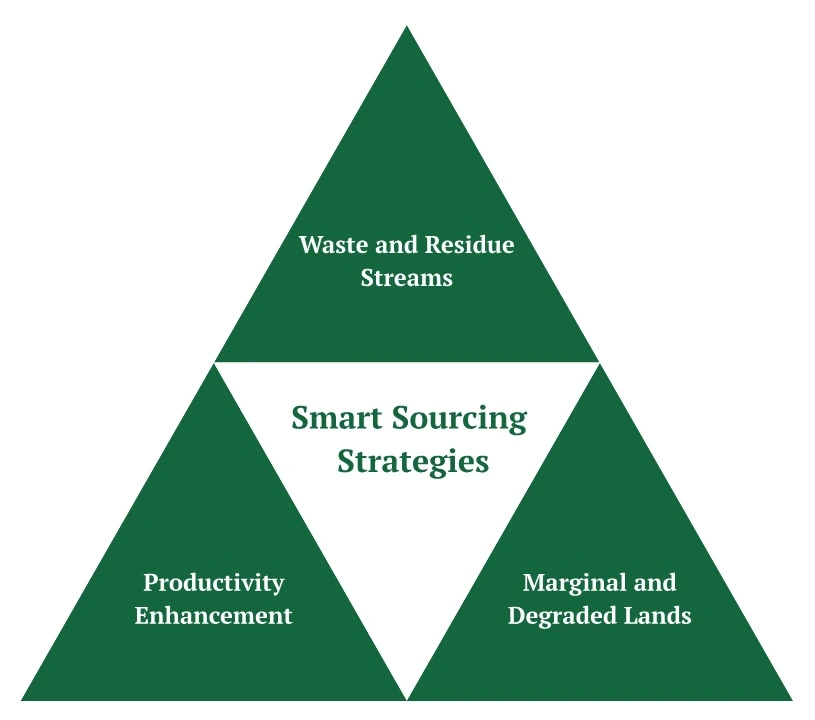The global transition to Net Zero emissions requires innovative solutions that go beyond intermittent renewables like solar and wind. Biomass derived from organic waste, agricultural residues, and sustainably grown plants offer a unique combination of reliable energy generation and green chemical production. According to IEA Bioenergy projections, biomass could supply approximately 20% of global energy needs by 2050 while operating within sustainable boundaries.
The effectiveness of biomass lies in its elegant simplicity. Plants absorb carbon dioxide as they grow. When we convert that biomass into energy, we release roughly the same CO2 back into the atmosphere, creating a closed loop that fossil fuels can never match. It’s photosynthesis in reverse, a carbon cycle that nature has perfected over millions of years. However, biomass is not automatically sustainable simply because it comes from plants.
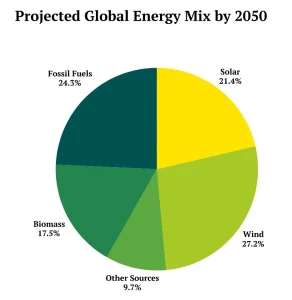
Why Biomass Matters for Energy Security
Reliable Base-Load Power: Solar panels and wind turbines have transformed energy generation, but they share a fundamental limitation: intermittency. Solar produces nothing at night, and wind turbines sit idle on calm days. Biomass-fired power plants, by contrast, provide continuous base-load power that keeps hospitals, data centres, and critical infrastructure running 24/7.
Biomass can be converted into multiple energy forms heat, electricity, and liquid biofuels such as ethanol and biodiesel. This versatility makes it particularly valuable for reducing fossil fuel dependence while maintaining energy security.
The Carbon Cycle Advantage: Biomass operates on a fundamentally different carbon cycle than fossil fuels. Plants absorb CO2 from the atmosphere as they grow through photosynthesis. When biomass is converted to energy, it releases approximately the same amount of CO2 back into the atmosphere, creating a closed loop. Fossil fuels, by contrast, release carbon that has been locked underground for millions of years.
The numbers support this natural advantage. In last 20 years, the terrestrial biosphere acted as a net carbon sink, sequestering approximately one-third of annual carbon emissions from human activities, according to IEA Bioenergy data. When managed sustainably, biomass systems can work with this natural carbon cycle rather than against it.
Green Chemicals from Agricultural Waste: Beyond energy, biomass offers enormous potential for transforming the chemical industry. Advanced catalytic and biochemical processes can break down lignocellulosic materials corn stalks, wheat straw, wood chips into platform chemicals like lactic acid, succinic acid, and hydroxymethylfurfural (HMF). These bio-based chemicals can replace petroleum-derived feedstocks in producing polymers, pharmaceuticals, and industrial chemicals.
Even lignin, traditionally considered waste in paper production, can now be converted into valuable aromatic compounds. Recent advances in solar-driven catalytic processes add another layer of sustainability, using renewable energy to transform renewable feedstocks.
The implications span multiple industries: biodegradable plastics, sustainable aviation fuel, industrial solvents, and specialty chemicals all derived from agricultural and forestry waste rather than petroleum. This represents a fundamental shift toward a circular bioeconomy.
The Land Use Challenge
This is where biomass deployment becomes complicated. Land use change from deforestation and agricultural expansion currently accounts for approximately 15% of global greenhouse gas emissions, according to the IEA Bioenergy Report.
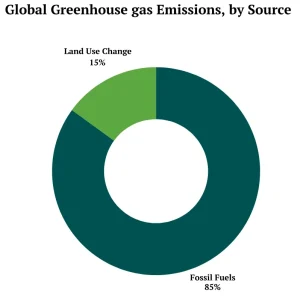
The historical context is sobering. Since 1750, humanity has released about 330 petagrams of fossil carbon into the atmosphere, with land use change contributing roughly one-third of this total. Today, less than 1% of global agricultural land is used for biofuel crops, meaning current bioenergy impact is relatively small. But as demand grows, so does the risk.
Direct and Indirect Impacts
The IEA Bioenergy Report distinguishes between two types of land use change. Direct land use change occurs when forests or grasslands are converted on-site for biomass production. Indirect land use change happens when biomass crops displace food production, pushing farmers to clear new land elsewhere potentially destroying natural ecosystems in the process.
A striking example comes from Indonesia, where peat swamp forests were clear-felled and drained for oil palm plantations. The resulting land use change emissions were so enormous they completely negated any climate benefits from the biofuel produced. This case illustrates why sourcing decisions are critical to biomass sustainability.
While the Carbon Dioxide Information Analysis Center (CDIAC) data shows that fossil fuel emissions currently exceed land use change emissions, both sources demand careful management. Done wrong, biomass expansion could make the climate problem worse, not better.
Pathways to Sustainable Biomass
The UK Government’s 2023 Biomass Strategy provides a blueprint for responsible deployment. The strategy identifies sustainable biomass as essential to achieving Net Zero, targeting biomass use in decarbonizing power generation by 2035. Critically, it establishes requirements for supply security, sustainability criteria, transparency, accountability, and cost-effectiveness.
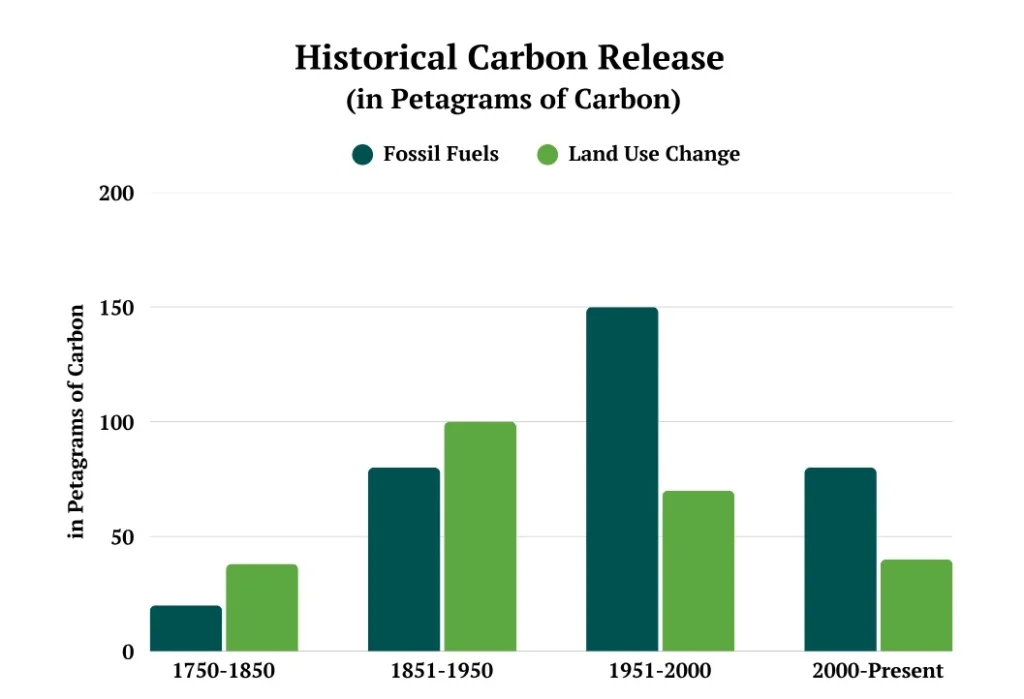
This framework reflects growing international consensus that biomass expansion must include rigorous environmental safeguards to prevent deforestation, biodiversity loss, and community displacement. According to the IEA Bioenergy Report, weak governance and inadequate sustainability criteria create significant risks for adverse environmental and social outcomes.
Smart Sourcing Strategies
The IEA Bioenergy Report identifies several feedstock sources that minimize land use risks:
Waste and Residue Streams: Agricultural residues like corn stover and rice husks, forest residues from sustainable timber operations, and organic waste from food processing create value from existing waste without requiring new land or competing with food production.
Marginal and Degraded Lands: Growing biomass on degraded lands avoids displacing prime agricultural land. However, these areas often lack water and nutrients, making economically viable cultivation challenging without enhanced agronomic practices and careful site selection.
Productivity Enhancement: Increasing agricultural yields globally, especially in developing countries, reduces pressure to convert natural lands for biomass production. This approach addresses food security and climate goals simultaneously.
The UK Biomass Strategy 2023 emphasizes that sustainable biomass should prioritize residues, wastes, and marginal lands rather than prime cropland, creating incentives aligned with environmental protection.
Advanced Technologies for Enhanced Climate Benefits
Carbon-Negative Solutions: Biochar represents one promising technology. Produced through biomass pyrolysis, biochar sequesters carbon in soils for centuries while improving soil fertility and water retention. The IEA Bioenergy Report identifies biochar as addressing both carbon sequestration and soil quality objectives.
Bioenergy with Carbon Capture and Storage (BECCS) takes this further, combining biomass energy generation with carbon capture and geological storage. This technology can actually remove CO2 from the atmosphere, creating “negative emissions” critical for ambitious climate targets. The IEA Bioenergy Report recognizes BECCS as essential for comprehensive carbon management strategies.
Integrated Land Use Systems: Combining biomass production with food crops, livestock, or agroforestry can optimize land use efficiency while minimizing environmental trade-offs. These integrated approaches acknowledge practical realities: biomass harvesting cycles range from six months to several years depending on the feedstock, requiring strategic planning for supply stability and economic viability.
Biomass in Comprehensive Decarbonization Strategies
Filling Critical Gaps: Biomass addresses sectors where electrification faces significant barriers aviation, maritime transport, heavy industry, and chemical manufacturing. While batteries and electric motors work well for passenger vehicles, they struggle with applications requiring high energy density or extreme temperatures. Biomass provides practical decarbonization pathways for these hard-to-electrify sectors. The technology is available today, not decades hence. This immediacy matters when climate targets demand urgent action.
Supply Chain Transparency: The UK Biomass Strategy 2023 emphasizes transparency and traceability throughout supply chains. Renewable status alone is insufficient verification of sustainability from field to final use is essential. This includes monitoring carbon stock protection, preventing deforestation, and ensuring fair treatment of affected communities.
Implementation Challenges
Biomass harvest cycles spanning months to years create logistical challenges distinct from fossil fuel supply chains. Ensuring consistent feedstock availability requires diversified sourcing and potentially storage infrastructure to buffer seasonal variations.
The IEA Bioenergy Report warns that inadequate governance creates risks of deforestation, biodiversity loss, and community displacement. Robust sustainability criteria, stakeholder engagement, and social safeguards are indispensable for responsible deployment.
Economic viability presents another challenge. While the UK Biomass Strategy 2023 emphasizes cost-effectiveness, achieving competitiveness with fossil alternatives often requires policy support, particularly during technology scaling phases. Investment in conversion technologies, supply chain infrastructure, and productivity enhancement will be critical.
Expanding Biomass for Green Energy
Biomass offers substantial potential for achieving sustainable energy production, green chemical manufacturing, and Net Zero emissions targets. Current utilization levels less than 1% of global agricultural land devoted to bioenergy crops indicate significant room for responsible expansion.
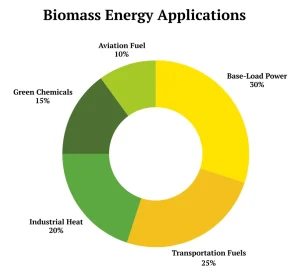
The terrestrial biosphere’s capacity to sequester one-third of anthropogenic carbon emissions demonstrates nature’s potential as a climate ally when working intelligently with natural systems. Success requires prioritizing waste and residue streams, implementing advanced technologies like biochar and BECCS, ensuring supply chain transparency, and maintaining robust environmental safeguards.
Policy frameworks like the UK Biomass Strategy 2023 and technical guidance from IEA Bioenergy provide practical blueprints. These frameworks acknowledge both opportunities and risks, establishing governance structures to optimize climate benefits while preventing adverse outcomes.
The Road Ahead
Biomass is not a silver bullet for climate change, but it is an essential tool in a comprehensive decarbonization strategy. It provides reliable renewable energy when solar and wind cannot, offers pathways to decarbonize hard-to-electrify sectors, and enables replacement of fossil feedstocks in chemical production.
The challenge lies not in whether biomass should play a role, but in ensuring that role is fulfilled through verifiably sustainable practices. This requires rigorous sustainability criteria, transparent governance, and continuous monitoring to prevent unintended environmental and social consequences.
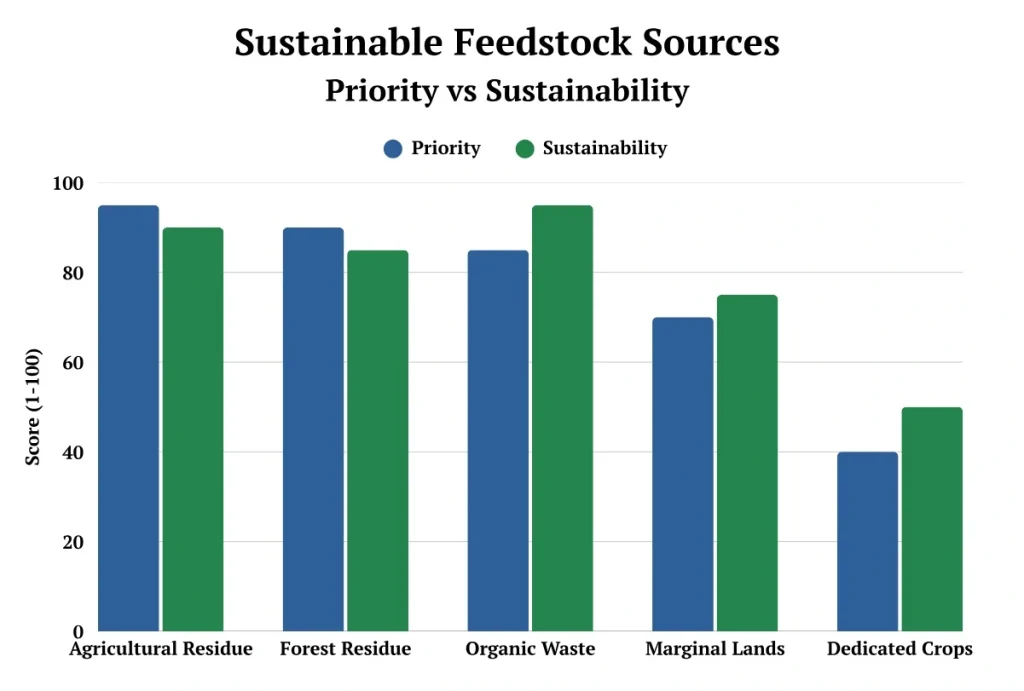
When integrated thoughtfully within diversified renewable energy portfolios and managed according to evidence-based sustainability principles, biomass can make substantial contributions to climate change mitigation while supporting economic development and circular economy objectives. The data, the technology, and the policy frameworks exist. What remains is the collective will to implement biomass systems that work with nature rather than against it turning yesterday’s waste into tomorrow’s sustainable energy and chemicals.

